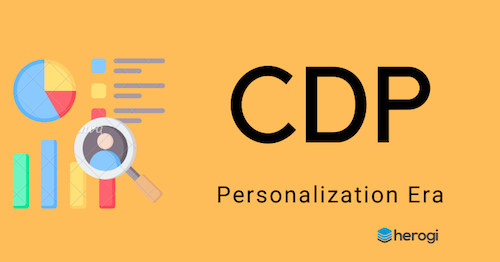We can all agree on this: personalization matters. When it comes to marketing, personalization becomes even more critical to get ahead in meeting the needs of customers. Customer behavior changed a lot in recent years, and they are becoming more demanding of brands by the day. People want to feel special; they want brands to know them, offer them tailored solutions and make their lives easier. Research shows that personalization has become one of the major expectations among consumers. If you cannot meet customer expectations and demands, it can be difficult to ensure the growth and sustainability of your business.
Since markets have grown more competitive, in order to meet such expectations of customers and create customer loyalty, you need to improve personalized marketing campaigns. One of the ways of doing this is to use a Customer Data Platform.
What is a Customer Data Platform (CDP)?
A Customer Data Platform (CDP) is a software that collects and combines customer data from different external and internal sources to build a unified and rich customer profile. This integrated database then can be used by companies to create more personalized marketing campaigns for their customers.
CDPs allow companies to provide a smooth customer journey across multiple touch points by collecting data from various sources and consolidating that data to take action.
Basically, a CDP collects, cleans, and improves customer data. This data includes:
- Basic information about your customer: Name, gender, e-mail address, phone number, job title, age, income etc.
- How a customer engages with your brand or service: Website visits, social media post interactions (likes, shares & replies), e-mail open rate, e-book downloads, etc.
- Customer behavior: Product or service purchases, subscription renewals or deactivations, user logins, free trial sign ups, etc.
- Attitudinal data: Customer’s direct opinion of your product or service – product reviews or survey results.
By using a CDP, brands can create customer profiles, perform detailed analysis of their customers, provide better customer support and they can separate existing and new audiences in a proper way.
All this data is organized and structured in such a smooth way that it could be easily managed by a marketer without any problems. When the data is ready within your CDP, you’ll be able to start using it for your business’ advantage.
What Is Personalized Marketing?
Personalized marketing is a marketing strategy by which companies leverage data analysis and digital technology to deliver individualized messages and product offerings to current or potential customers.
There are different benefits of using personalized marketing, such as improving customer experience, increasing brand loyalty and revenue, creating better relationships and conversions with customers, etc.
We can explain personalized marketing better with an example taken from real life. Imagine ordering flowers for your spouse from a website to celebrate your wedding anniversary. Using your anniversary date info, next year this website sends you an e-mail reminding you that your wedding anniversary is soon and offers you a discount for flowers.
How Can We Use CDP For Personalized Marketing?
A CDP is the key to using customer data to create more personalized experiences. With CDPs you can gain real-time info of your customer and leverage that information.
Using CDPs, you can make your communication with your customers more personal. As we discussed the main use of CDP is, “it collects and unifies first-party customer data—from multiple sources—to build a single, coherent, complete view of each customer and then makes that data available to marketers to create targeted and personalized marketing campaigns.”
With these customer data profiles, it is possible to classify, sort and group your customers according to many different criteria such as age, gender, shopping habits and interests. And then, your marketing team can prepare specific messaging that matches customer needs and guides them to solutions. More you know about a customer based on their data profile, the more you can use this to build tailored interactions that will actually help them.
You can leverage the data you collect not only in your first encounter with the customer, but also in real time at any point during customer journey. For example, when a customer buys a product from your online shop, you can suggest different products for their shopping cart based on their previous purchases. If they leave without completing the purchase, you can remind them that they abandoned a cart of your products via e-mail or an SMS.
Getting e-mails including discount codes and special videos created by brands for your birthday, called by your beautician to remind you that you haven’t had skin care for a long while and suggests you an appointment time, personalized Netflix homepage shaped by the series/movies you watch, like and dislike, Spotify sending you “Spotify Wrapped” every year to show you your most played songs, artists, etc… These are all examples of personalized marketing. And you can get all the specific data you need to create this kind of campaigns simply using CDPs.
Looking for a solution to achieve something similar? Let’s meet here, we can help to integrate with your first CDP solution.

